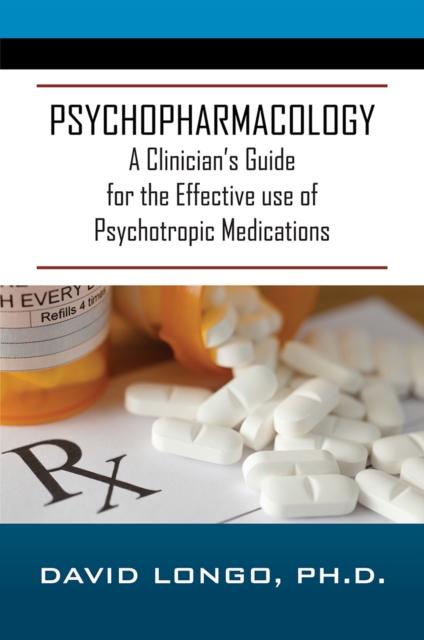
Psychopharmacology : A Clinician's Guide for the Effective use of Psychotropic Medications EPUB
by Ph.D. David Longo
EPUB
- Information
Description
This text book is an essential resource representing the medical treatment of psychological disorders for the mental health professional. The book provides information concerning neuron and glia cell functions. Neuroinflammatory activation by stress is described and importance of two glia cells in the brains immune response to stress via the interaction with of cytokines which coordinates the immune response and activates neuroinflammation. This activation causes the expression of vulnerable phenotypes which produces the particular psychological disorder.
Pharmacokinetics of psychotropic drugs are described in-terms of half-life, steady state, enzyme metabolism of the medication in the liver, and the production of active metabolites which dictates the psychological actions of the drug. The particular drug actions are discussed via down-stream transduction cascades in the neuron which actives or de-actives neuronal genes which leads to the psychotropic drugs psychological actions.
The book delineates the three main transporter genes of the Solute Carrier-6 (SLC6) gene family, which produces neurotransmitters and the therapeutic actions of psychotropic drugs. These neurotransmitters are: serotonin (5-HT), dopamine (DA), norepinephrine (NE), acetylcholine (Ach), glutamate (Glu), and gamma-amino butyric acid (GABA).
The drugs side-effects include, restless leg syndrome, hyponatremia, serotonin side-effects, malignant serotonin syndrome, anti-cholinergic side-effects, extrapyramidal symptoms (EPS), tardive dyskinesia (TD), neuroleptic malignant syndrome, and suicide risk. This section of the book concludes with a discussion of negative drug effects on dental health, diet, and physical complications.
The remainder of the text discusses psychological disorders, diagnostic criteria, epidemiology, theoretical models, genetics, neuroanatomy, psychological treatment, and the particular medication used to treat the disorder. For each psychotropic drug the following are provided: dosage, titration, taper, time to work, neurotransmitter profile, specific side effects, enzymes, and metabolites. Switching from one drug to other schedules are listed, along with diagnosis treatment resistant medication strategies.
A sample of psychotropic drugs include: Schizophrenia (clozapine, risperidone, paliperidone, and others), anxiety disorders (diazepam, clonazepam, lorazepam, etc.), anti-depressants (fluoxetine, venlafaxine, desvenlafaxine, duloxetine, etc), bipolar disorders (mood stabilizers: lithium, valproic acid, carbamazepine, lamotrigine, etc., and anti-psychotics: aripiprazole, lurasidone, rexulti, and cariprazine), Alzheimer Disease (rivastigmine, donepezil, memantine, aducanumab-avwa, et al.), Attention Deficit Disorder (amphetamine D, methylphenidate, etc.), sleep dysfunctions (suvorexant, exzopiclone, zolpidem, benzodiazepines, etc), and addiction (Eating: naltrexone + bupropion, tirzepatide, etc; Smoking: bupropion; Alcohol: disulfiram, naltrexone, etc; and Opioid: methadone, buprenex + naloxone, etc). The text book concludes with a discussion of psychotropic treatment of children and the elderly, including drug dosing adjustments.
Information
-
Download Now
- Format:EPUB
- Publisher:Outskirts Press
- Publication Date:28/02/2024
- Category:
- ISBN:9781977273185
Information
-
Download Now
- Format:EPUB
- Publisher:Outskirts Press
- Publication Date:28/02/2024
- Category:
- ISBN:9781977273185